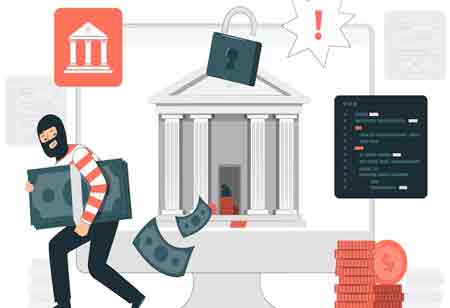CLOSE
Specials
- Trading Solutions APAC
- Wealth Management MENA
- CPA Firms Canada
- Financial Risk Management APAC
- Investment Banking APAC
- Corporate Advisory APAC
- Regtech APAC
- Escrow Services
- Digital Banking Latam
- Investment Advisory APAC
- Treasury Management Europe
- RegTech Europe
- Financial Risk Management Europe
- Mortgage Broker
- Financial Licensing Europe
- RIA Advisory Europe
- FinTech Canada
- Financial Asset Management APAC
- Financial Health Europe
- Trading
- Investment Services Europe
- Lending Mangment Latam
- Payment Solution Europe
- Broker Dealer Firms Canada
- Alternative Investments Canada
- Financial Fraud
- Investment Management Latam
- Investment Banking Canada
- Lending Management
- Payment Solution
- Proprietary Trading Europe
- Wealth Management
- FinTech
- Financial Brokerage Firm APAC
- Investment Advisory Europe
- Claim Adjusting
- Claim Adjusting APAC
- Mergers and Acquisitions Consulting APAC
- Equipment Financing
- CPA Firms
- Mergers and Acquisitions Consulting Canada
- Investment Services
- Valuation Services Canada
- Wealth Management APAC
- Broker Dealer Firms
- Debt Collection Agencies
- Mergers and Acquisitions Consulting
- FinTech Europe
- Fintech Latam
- Financial Planning / Retirement
- Investment Management
- Financial Compliance
- Payment and Card Latam
- Financial Marketing
- Investment Services Latam
- Digital Insurance Europe
- Alternative Investments
- Trading Solutions Europe
- Tax Advisory Canada
- Mergers and Acquisitions Consulting Latam
- Wealth Management Latam
- Digital Banking Europe
- Business Loan
- Financial Portfolio Management Canada
- Financial Restructuring Europe
- Mergers and Acquisitions Consulting Europe
- Wealth Management Europe
- Debt Collection Agencies Europe
- CFO Services
Weekly Brief
×Be first to read the latest tech news, Industry Leader's Insights, and CIO interviews of medium and large enterprises exclusively from Financial Services Review
Thank you for Subscribing to Financial Services Review Weekly Brief
Redefining Access: Inclusive Business Loan Innovations
Business loan services have evolved with digital innovation and inclusive lending models, offering flexible funding and improved access for business stakeholders.

By
Financial Services Review | Tuesday, November 04, 2025
Stay ahead of the industry with exclusive feature stories on the top companies, expert insights and the latest news delivered straight to your inbox. Subscribe today.
Business loan services form a foundational pillar of economic development by providing the financial support enterprises need to launch, expand, and thrive. These services offer a wide range of funding solutions tailored to satisfy the operational demands of businesses across different sectors and sizes. From working capital and equipment financing to short-term credit and long-term investment funding, business loans enable organizations to seize growth opportunities, navigate market challenges, and maintain financial stability. As the commercial landscape continues to change, the delivery and structure of business loan services are also undergoing significant transformation, driven by innovation, changing borrower needs, and a growing emphasis on inclusion and efficiency.
Shifting Dynamics in Business Lending Practices
The landscape of business loan services is experiencing a significant transformation driven by technological integration, evolving borrower expectations, and alternative funding sources. Digital platforms have accelerated the speed of loan processing, enabling more streamlined applications, faster approvals, and automated credit evaluations. These platforms also empower lenders to serve a broader audience, including underbanked segments, by leveraging data analytics for risk profiling. A noticeable shift toward short-term financing and working capital loans reflects changing business models and the growing need for liquidity flexibility.
A significant trend is the increasing significance of non-traditional lenders, including fintech companies and peer-to-peer lending platforms. These institutions offer a more accessible alternative to traditional banks, often focusing on underserved businesses that may not meet conventional lending criteria. Their agility in adopting emerging technologies and personalized lending models has reshaped borrower-lender relationships.
Interest rate fluctuations and inflationary pressures also influence lending behaviors. Borrowers are more cautious, favoring fixed-rate loans to mitigate financial unpredictability. At the same time, lenders are revising risk assessment tools and loan pricing structures to accommodate economic shifts. Regulatory compliance remains integral, with lenders aligning offerings with evolving government mandates that promote responsible lending and transparency.
Overcoming Lending Barriers with Adaptive Solutions
One major challenge in the business loans sector is the accessibility gap faced by small and micro-businesses that often lack sufficient credit history or collateral. Traditional financial institutions typically apply strict lending criteria, making it difficult for these enterprises to qualify for funding. To bridge this gap, alternative lenders have introduced cash flow-based lending models, which assess the health of a business through real-time revenue streams, transactional behavior, and digital financial records rather than relying solely on credit scores or assets. This method expands access to funding for businesses with limited documentation or unconventional structures.
Another hurdle involves lengthy and complex loan application processes, especially with conventional lenders. This deters time-constrained entrepreneurs from pursuing necessary financial support. In response, many lending institutions have adopted digital onboarding, e-signature tools, and AI-driven document verification to reduce paperwork and accelerate the loan lifecycle. These innovations enhance customer experience while lowering operational costs for lenders.
Maintaining compliance with evolving regulations poses an additional challenge, especially for lenders operating across multiple jurisdictions. Regulatory inconsistencies can delay disbursements and increase administrative burden. Financial institutions have invested in compliance automation and centralized regulatory intelligence platforms to address this. These tools allow for real-time monitoring of policy changes and seamless adaptation to regulatory frameworks, ensuring timely and lawful lending operations.
Borrower education continues to be a critical concern. Many business owners lack clarity on available loan products, repayment structures, or eligibility criteria. This knowledge gap may result in poor loan decisions or financial strain. In response, lenders and financial advisors prioritize transparency through digital knowledge hubs, interactive loan calculators, and personalized guidance, empowering businesses to make informed borrowing decisions aligned with their operational goals.
Emerging Opportunities and Technological Progress for Stakeholders
Significant opportunities are arising from the digitalization of the lending ecosystem. Machine learning, advanced analytics, and big data are harnessed to develop predictive credit scoring models that enhance risk assessment accuracy. These technologies enable lenders to serve niche market segments while improving loan portfolio performance efficiently. For stakeholders, this translates to increased market penetration, reduced default rates, and improved service delivery.
Blockchain technology is another advancement with transformative potential. Its application in smart contracts, digital identity verification, and secure transaction recording can greatly enhance transparency, reduce fraud, and speed up the loan approval and disbursement process. For borrowers and lenders alike, blockchain offers the advantage of traceable, immutable records that streamline verification and foster trust.
Open banking frameworks also offer promising advancements. Open banking enables personalized loan offerings based on comprehensive financial behavior by allowing secure access to economic data from multiple institutions. This approach enhances creditworthiness assessment and fosters greater competition among lenders, resulting in more competitive rates and tailored solutions for businesses.
Sustainability-focused lending is also gaining traction. Lenders are introducing green loan products that support environmentally friendly initiatives, such as carbon reduction strategies or renewable energy investments. This alignment with corporate social responsibility helps businesses transition to more sustainable operations and positions lenders as champions of environmental stewardship.
Collaborations between traditional banks, fintech firms, and government-backed programs create a more inclusive lending environment. Co-lending arrangements and credit guarantee schemes reduce lenders' risk while extending credit access to underserved sectors. Such partnerships foster innovation, increase capital flow, and support broader economic resilience.

Copyright © 2025 Financial Services Review. All rights reserved






